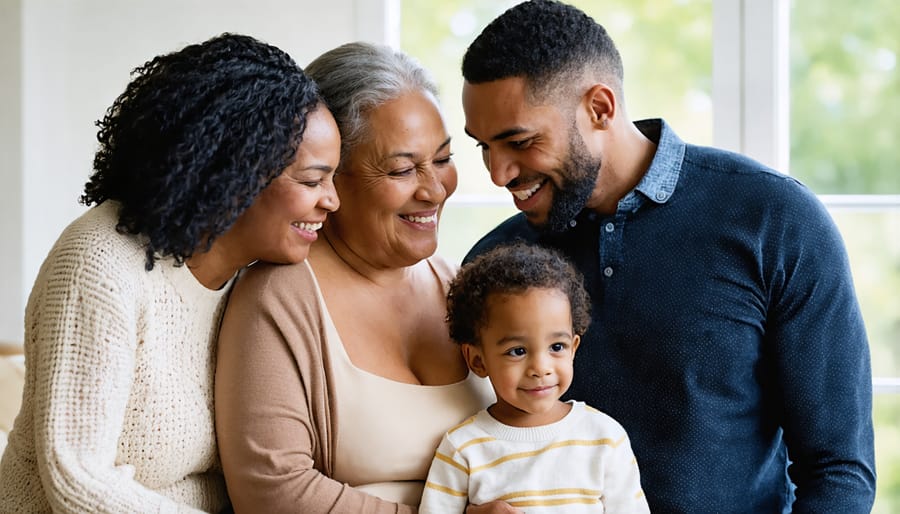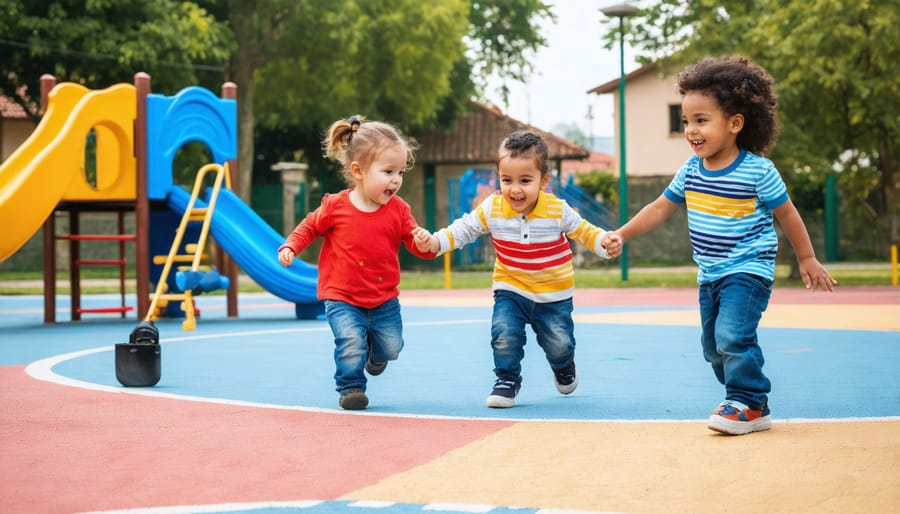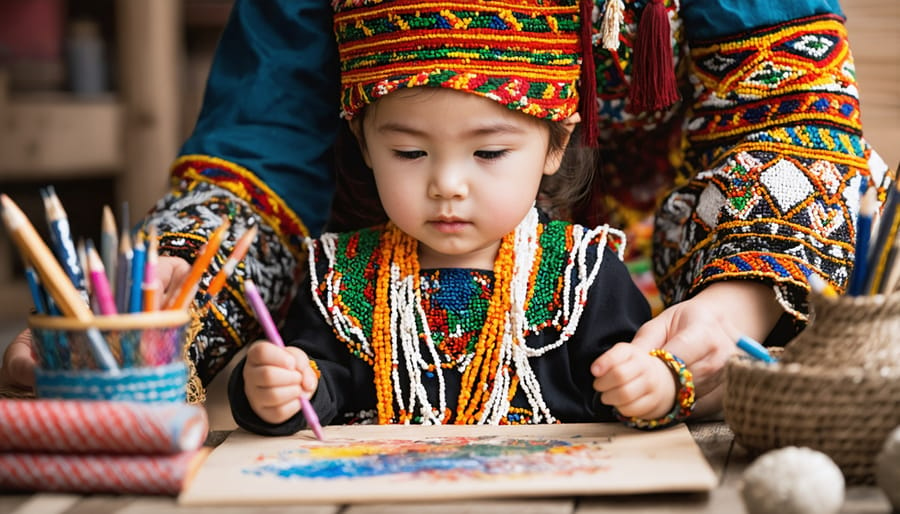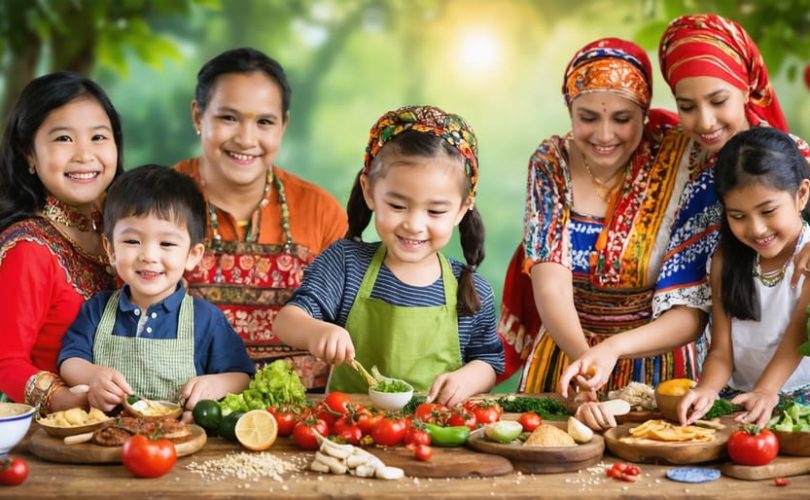From the moment a child takes their first breath, they’re shaped by an intricate web of social and cultural forces that profoundly influence their development, beliefs, and behaviors. These invisible yet powerful forces – from family traditions and community values to media messages and societal norms – create the foundation for how children understand themselves and their place in the world.
Recent research reveals that social-cultural influences have become increasingly complex in our interconnected, digital age. Children today navigate multiple cultural contexts simultaneously, from their immediate family environment to global online communities. This rich tapestry of influences creates both unprecedented opportunities for growth and unique challenges for healthy development.
Understanding these social-cultural dynamics isn’t just academic curiosity – it’s essential knowledge for anyone involved in raising, educating, or supporting children. Whether it’s the impact of peer relationships on identity formation, the role of cultural traditions in emotional development, or the influence of social media on behavior patterns, these forces shape every aspect of a child’s journey to adulthood.
As we explore how social and cultural influences affect child development, we’ll examine practical strategies for nurturing resilient, culturally aware young people who can thrive in our diverse, rapidly changing world.
Family Dynamics and Cultural Values
Parenting Styles Across Cultures
Parenting practices vary significantly across different societies, with each culture developing unique cultural parenting approaches based on their values, beliefs, and traditions. For instance, Western cultures often emphasize independence and individual achievement, leading to parenting styles that encourage autonomy from an early age. In contrast, many Eastern cultures prioritize interdependence and family harmony, resulting in more collaborative parenting methods.
Consider how Japanese parents often practice “skinship,” emphasizing physical closeness and co-sleeping, while American parents typically focus on establishing independent sleeping patterns early. Similarly, Nordic countries are known for their “friluftsliv” approach, where outdoor play and nature connection are central to childrearing, regardless of weather conditions.
These cultural differences extend to discipline methods, educational expectations, and emotional expression. African and Latin American cultures often embrace community-based parenting, where extended family members play significant roles in child-rearing. Meanwhile, some Asian cultures place strong emphasis on academic achievement and structured learning from an early age.
Understanding these diverse approaches helps us appreciate that there isn’t a single “right” way to parent. What works well in one cultural context may not be as effective in another. The key is recognizing how these different methods shape children’s development while respecting and learning from the wisdom each culture offers in raising healthy, well-adjusted children.
Extended Family Influence
Extended family members play a vital role in shaping a child’s development, offering unique perspectives, additional support systems, and diverse life experiences. Grandparents, aunts, uncles, and cousins contribute to creating a rich tapestry of relationships that influence how children understand family dynamics, cultural values, and social connections.
Research shows that children who maintain strong bonds with extended family members often demonstrate better emotional resilience and social skills. For example, grandparents can serve as invaluable mentors, sharing family history, traditions, and wisdom that parents might not possess. Their presence often provides children with a sense of cultural continuity and identity.
Extended family relationships can also offer children additional sources of emotional support during challenging times. When facing difficulties at school or with peers, children may feel comfortable confiding in an aunt or uncle who can provide different perspectives than their parents. These relationships create a broader support network that enhances a child’s sense of security and belonging.
Moreover, extended family members frequently serve as role models, showcasing diverse career paths, lifestyles, and ways of problem-solving. This exposure helps children develop more flexible thinking and adaptability. Regular interaction with extended family can also strengthen a child’s understanding of cultural practices, languages, and customs, particularly in multicultural families.
Many families today maintain these important connections through regular gatherings, video calls, and shared activities, ensuring that geographic distance doesn’t diminish the positive influence of extended family relationships.

Social Environment and Peer Relationships

School and Community Impact
Schools and communities play pivotal roles in shaping children’s social and emotional development. Within the educational environment, children experience their first major exposure to diverse cultural backgrounds, beliefs, and social norms outside their family unit. This exposure significantly influences their peer relationship development and shapes their understanding of social dynamics.
Teachers often serve as cultural bridges, helping children navigate differences and fostering inclusive environments where all cultural backgrounds are celebrated. For example, when schools incorporate multicultural education and celebrate diverse holidays, children develop a broader worldview and greater cultural sensitivity.
Community involvement adds another layer of social-cultural influence. Local organizations, religious institutions, and cultural centers provide children with opportunities to connect with their heritage while learning about others. As one elementary school counselor shares, “When children participate in community events, they develop a stronger sense of belonging and cultural identity.”
The impact extends beyond the classroom walls. After-school programs, sports teams, and cultural activities create spaces where children can practice social skills while being exposed to various traditions and perspectives. These experiences help children develop cultural competence, empathy, and a deeper appreciation for diversity.
Parents and educators can work together to ensure these influences positively shape children’s development by encouraging participation in diverse activities and maintaining open dialogues about cultural differences.
Cultural Identity Formation
Children develop their cultural identity through a complex interplay of social interactions, family traditions, and community experiences. From an early age, they absorb cultural cues from their immediate environment, learning about their heritage, values, and customs through daily interactions with family members and caregivers.
Parents play a crucial role in this journey by sharing stories, celebrating cultural traditions, and modeling cultural practices. For example, when families participate in traditional celebrations or speak their native language at home, children naturally incorporate these elements into their developing sense of self.
School and community settings also significantly influence cultural identity formation. When children interact with peers from diverse backgrounds, they begin to understand both their own cultural uniqueness and develop appreciation for others. These experiences help them navigate multiple cultural contexts and develop a secure sense of belonging.
Dr. Maria Rodriguez, a child development specialist, explains, “Cultural identity formation isn’t just about learning traditions – it’s about children understanding their place in the world and feeling proud of their heritage while remaining open to other perspectives.”
Supporting healthy cultural identity development involves creating opportunities for children to explore their heritage, ask questions, and express themselves authentically. This might include participating in cultural events, connecting with extended family, or engaging with cultural art and music. The key is maintaining an open, affirming environment where children feel safe expressing all aspects of their cultural identity.
Media and Technology Influence
Digital Social Connections
In today’s digital age, children are growing up in a world where virtual connections are as significant as face-to-face interactions. While technology offers incredible opportunities for learning and socializing, parents and educators need to understand how these digital relationships shape children’s social development.
Studies show that moderate, well-supervised online activities can enhance children’s social skills, allowing them to maintain friendships, develop empathy, and build global awareness. However, the key lies in establishing safe online interactions and maintaining a healthy balance between virtual and real-world connections.
Dr. Sarah Chen, a child development specialist, notes, “Digital platforms can be wonderful tools for shy children to practice social skills in a less pressured environment. The challenge is ensuring these online experiences complement, rather than replace, in-person relationships.”
Parents can support positive digital social development by:
– Setting reasonable screen time limits
– Participating in their children’s online activities
– Teaching digital citizenship
– Encouraging a mix of online and offline friendships
– Monitoring social media use while respecting privacy
Remember, every child responds differently to digital interactions, so observe your child’s comfort level and adjust accordingly.
Cultural Messages in Media
Media plays a powerful role in shaping children’s perceptions of themselves and the world around them. From television shows and movies to social media and online content, young minds are constantly absorbing messages about beauty standards, gender roles, and social expectations.
Research shows that children who regularly consume media featuring diverse representations and positive role models tend to develop healthier self-esteem and more inclusive worldviews. However, exposure to unrealistic beauty standards or stereotypical portrayals can negatively impact a child’s self-image and cultural understanding.
As Dr. Sarah Chen, child psychologist, explains, “Children often measure themselves against what they see in media. When they don’t see themselves represented, or only see limited stereotypes, it can affect their sense of belonging and self-worth.”
Parents can help by actively discussing media messages with their children, choosing content that celebrates diversity, and encouraging critical thinking about media representations. Creating open conversations about what children see in media helps them develop resilience against potentially harmful messages while appreciating positive cultural portrayals.
It’s also important to balance media consumption with real-world experiences and interactions that reinforce positive cultural values and authentic human connections.
Supporting Healthy Cultural Development
Creating Cultural Awareness
Helping children understand and appreciate their cultural heritage is a vital part of developing cultural identity and emotional well-being. Start by creating opportunities for meaningful conversations about your family’s traditions, values, and history. Share stories about relatives, cultural celebrations, and meaningful customs that have been passed down through generations.
Make cultural learning a hands-on experience by cooking traditional meals together, participating in cultural festivals, or creating art projects inspired by your heritage. These activities help children connect with their roots in an engaging and memorable way. Consider starting a family tradition of celebrating cultural holidays or organizing regular gatherings where extended family members can share their experiences and wisdom.
Language plays a crucial role in cultural awareness. If your family speaks a heritage language, encourage its use at home alongside the primary language. Even simple phrases or lullabies can help maintain this important connection to cultural roots.
Books, music, and media featuring diverse characters and stories from your cultural background can be powerful tools for learning. Look for age-appropriate resources that accurately represent your culture and help children see themselves reflected in the stories they read.
Remember that cultural awareness isn’t just about celebrations and traditions – it’s also about understanding values, beliefs, and different ways of viewing the world. Help children recognize and appreciate these deeper aspects of culture through open discussions and by modeling cultural pride and respect for diversity in your daily life.

Building Cultural Resilience
Building cultural resilience in children requires a thoughtful and intentional approach that helps them embrace their own cultural identity while respecting and adapating to different cultural contexts. Start by creating an open dialogue about cultural differences at home, encouraging questions and discussions about various traditions, beliefs, and practices.
Help children develop a strong sense of their own cultural identity by sharing family stories, celebrating cultural traditions, and maintaining connections with their heritage. This foundation gives them confidence when navigating different cultural environments.
Dr. Maria Chen, a cultural psychologist, explains, “Children who understand and appreciate their own cultural background are better equipped to embrace diversity and adapt to new cultural settings.” She recommends creating opportunities for children to interact with peers from different cultural backgrounds through community events, cultural festivals, or diverse school programs.
Teach children practical strategies for managing cultural differences:
– Practice cultural code-switching: Help them understand when and how to adjust their behavior in different cultural settings
– Develop communication skills that work across cultures
– Learn to recognize and respect different cultural norms
– Build confidence in expressing their own cultural identity while showing curiosity about others
When children encounter cultural challenges, validate their feelings and help them problem-solve. For example, if a child feels different during lunch because of their traditional food, work together to find ways to share their culture positively with classmates.
Remember that building cultural resilience is an ongoing process. Celebrate small victories and help children see cultural differences as opportunities for learning and growth rather than obstacles to overcome.
The journey of understanding social and cultural influences on child development reveals the profound impact our community environments have on young minds. As we’ve explored throughout this article, children thrive when surrounded by positive cultural support systems that celebrate diversity, encourage healthy relationships, and promote emotional well-being.
Remember that every child’s cultural context is unique and valuable. By acknowledging and embracing these differences, we create inclusive environments that support optimal development for all children. Parents, educators, and caregivers play crucial roles in fostering cultural awareness and building bridges between different communities.
The research consistently shows that children who feel connected to their cultural heritage while being exposed to diverse perspectives develop stronger self-identity, better social skills, and greater emotional resilience. By actively promoting cultural understanding in our homes, schools, and communities, we invest in our children’s future success and well-being.
Moving forward, let’s commit to creating supportive environments that celebrate cultural diversity, challenge harmful stereotypes, and provide every child with opportunities to flourish. Whether through storytelling, community engagement, or daily interactions, each of us can contribute to building a more inclusive and nurturing world for our children.
Together, we can ensure that social and cultural influences serve as positive forces in our children’s development, helping them grow into confident, empathetic, and well-adjusted individuals who appreciate both their own heritage and the rich tapestry of human experience.


